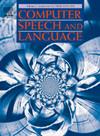LSRD-Net: A fine-grained sentiment analysis method based on log-normalized semantic relative distance
IF 3.4
3区 计算机科学
Q2 COMPUTER SCIENCE, ARTIFICIAL INTELLIGENCE
引用次数: 0
Abstract
With the development of AI technology and increasing scene demands, research on fine-grained sentiment analysis gradually replaces sentence-level or document-level coarse-grained sentiment analysis. However, most of the existing fine-grained sentiment analysis (i.e., aspect-based sentiment analysis) relies heavily on the traditional attention mechanism and does not incorporate prior knowledge for assisted recognition in aspect sentiment focusing, ignoring the importance of aligning aspect terms with sentiment information. Therefore, considering the linguistic conventions when expressing emotions, we propose a Log-SRD-based neural network model named LSRD-Net, aiming to improve the recognition accuracy and alignment efficiency of aspect terms and sentiment tendencies. The model uses the logarithmic function to normalize the semantic relative distance (SRD) matrix, then introduces the optimized matrix into the operation of the attention mechanism to achieve the introduction of a prior knowledge, and improves the alignment of aspect term and sentiment information by means of the improved cross-attention mechanism. To validate the effectiveness of the LSRD-Net, several comparative and ablation experiments are conducted on four fine-grained sentiment analysis datasets. The analysis and evaluation of experimental results demonstrate that the LSRD-Net achieves the state-of-the-art performance.
LSRD-Net:基于对数归一化语义相对距离的细粒度情感分析方法
随着人工智能技术的发展和场景需求的增加,细粒度情感分析的研究逐渐取代句子级或文档级的粗粒度情感分析。然而,现有的细粒度情感分析(即基于方面的情感分析)大多依赖于传统的注意机制,没有将先验知识用于方面情感聚焦的辅助识别,忽略了将方面术语与情感信息对齐的重要性。因此,考虑到情感表达时的语言习惯,我们提出了一种基于log - srd的神经网络模型LSRD-Net,旨在提高方面术语和情感倾向的识别精度和对齐效率。该模型利用对数函数对语义相对距离(SRD)矩阵进行归一化,然后将优化后的矩阵引入到注意机制的操作中,实现先验知识的引入,并通过改进的交叉注意机制改进方面项和情感信息的对齐。为了验证LSRD-Net的有效性,在4个细粒度情感分析数据集上进行了对比和消融实验。对实验结果的分析和评价表明,LSRD-Net达到了最先进的性能。
本文章由计算机程序翻译,如有差异,请以英文原文为准。
求助全文
约1分钟内获得全文
求助全文
来源期刊

Computer Speech and Language
工程技术-计算机:人工智能
CiteScore
11.30
自引率
4.70%
发文量
80
审稿时长
22.9 weeks
期刊介绍:
Computer Speech & Language publishes reports of original research related to the recognition, understanding, production, coding and mining of speech and language.
The speech and language sciences have a long history, but it is only relatively recently that large-scale implementation of and experimentation with complex models of speech and language processing has become feasible. Such research is often carried out somewhat separately by practitioners of artificial intelligence, computer science, electronic engineering, information retrieval, linguistics, phonetics, or psychology.
 求助内容:
求助内容: 应助结果提醒方式:
应助结果提醒方式:


